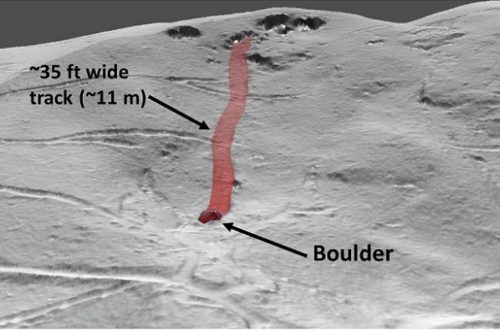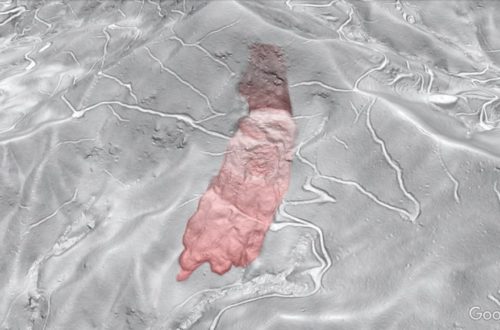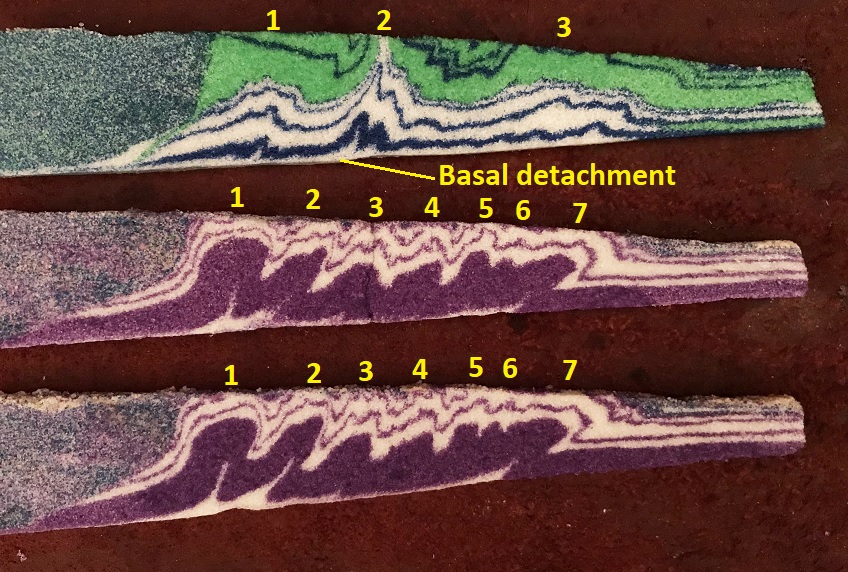
Sandbox model anticlines with some structural complexity
These fold-thrust belt analog models contain anticlines with interesting changes in structural style from top to bottom. Anticlines are labeled by number, and all are associated in some way with faulting originating from the basal detachment of the models (which is only labeled on the top model).

Anticline 2 in the top model is extremely narrow at the model’s surface, with vertical limbs that quickly transition to lower dips in adjacent synclines. A thin, vertically extensive “smear” of the upper two white layers has been squeezed into the core of the anticline. The blue marker layers have been stretched and thinned in the squeezed area until they are almost not visible.
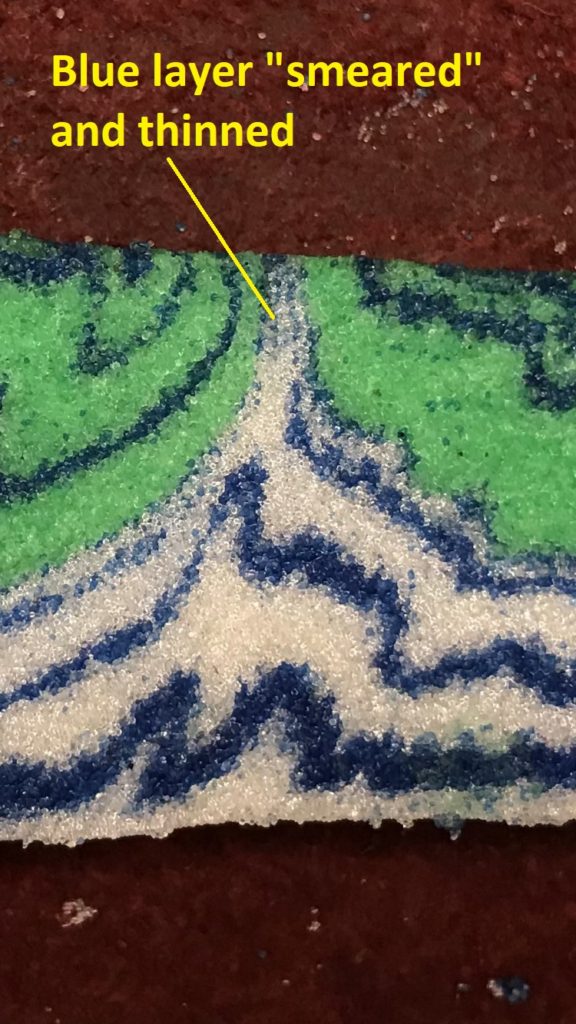
Deeper layers show more typical thrust imbrication and shortening/thickening expected from compressional deformation. Some of the smaller folds deeper in the model have developed steep limbs on their hinterland side, suggesting minor backthrust movement.
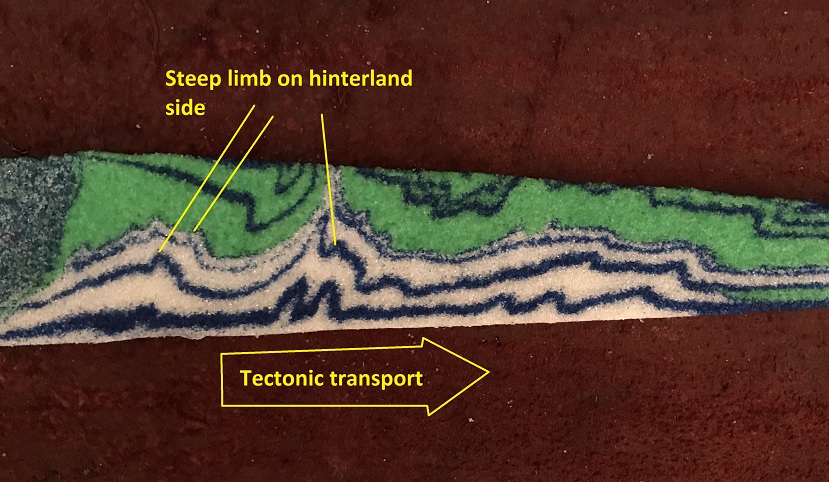
Backthrust movement (shown by red arrows below) within the white layers is also implied by the overall shape of the anticline and the fact that the deeper thrusts do not propagate upward through the entire section.
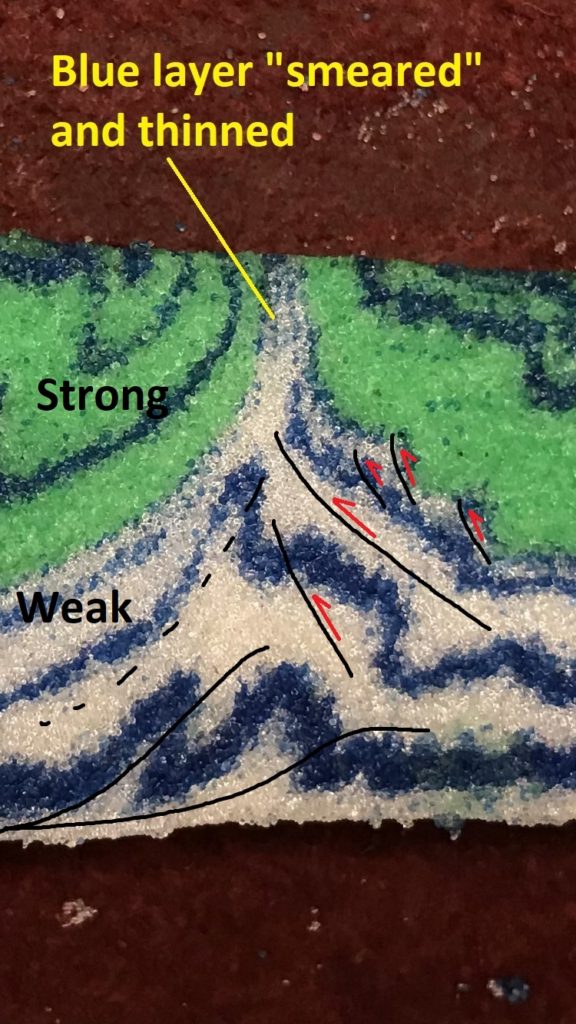
Similar structural styles are commonly interpreted in the Bolivian and northwest Argentinian sub-Andes, where stronger upper layers lift off of deeper layers along weak shale horizons (lavender, between green and brown, in the sections below). In the model, the green and blue layers are stronger than the white layers, whose weakness allows the green layers to be squeezed together in the tight anticline. The schematic below from Butler et al. (2019) shows interpreted (b) and drilling-confirmed (d) geometries of the kilometer-scale Incahuasi anticline of Bolivia.
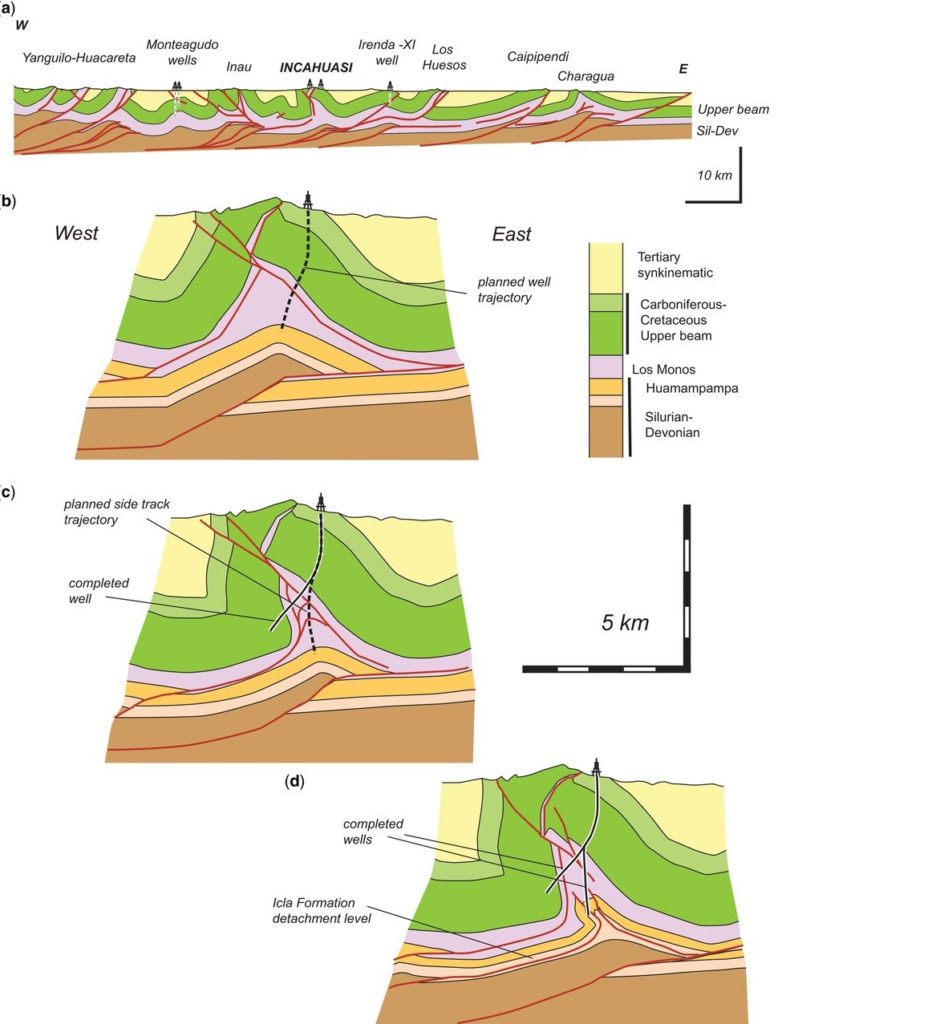
The purple models use stronger layers (solid purple) at depth, with weaker glass microbeads (white) with thin purple marker beds higher in the section. In this case, anticlines are more complex near the surface of the model, with a simpler structural style within the thick purple horizon at depth.
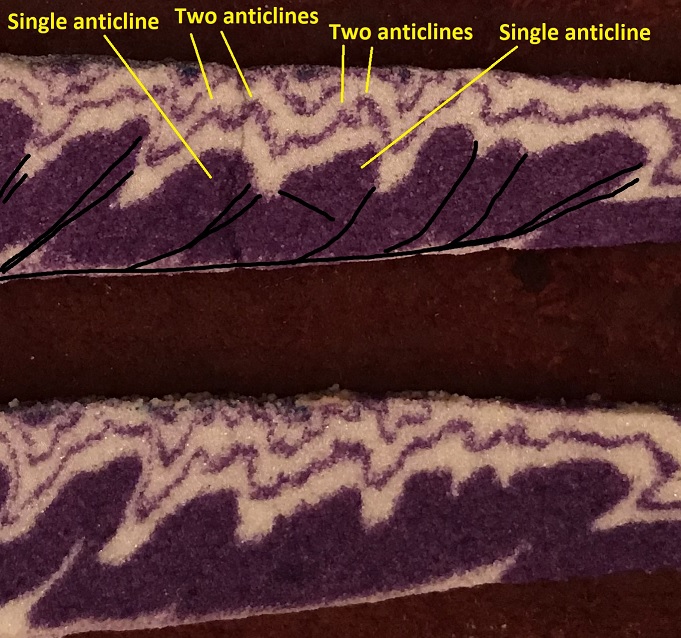
Many of the anticlines, which are fundamentally thrust fault-controlled (black lines in the image above), develop two or more small folds atop the a single fold crest in the deep purple layer. These small folds occasionally have steep limbs on their hinterland side, consistent with backthrusting.
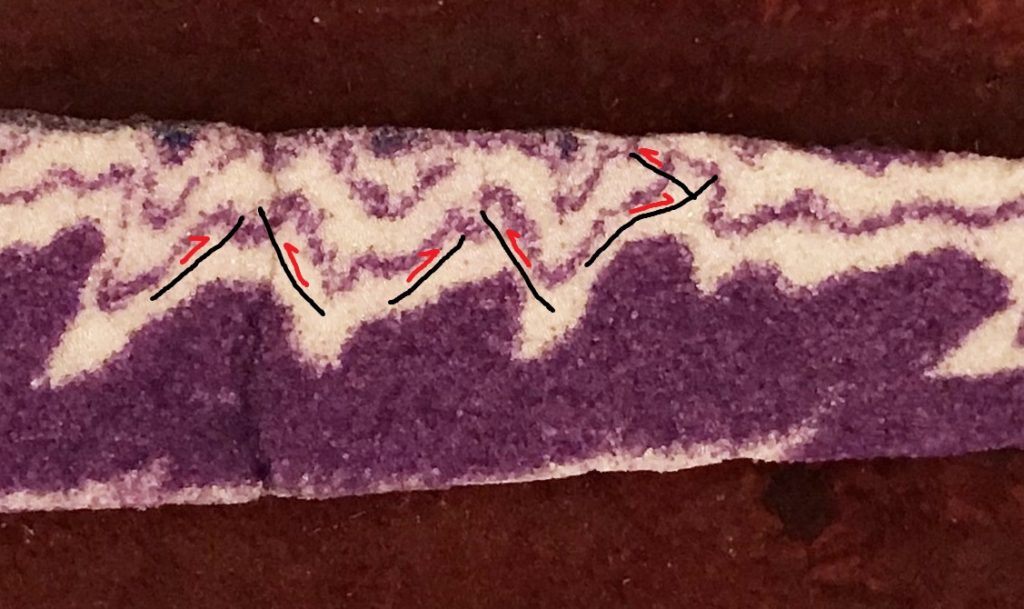
The small-scale folds are clearly part of overall anticlinal structures affecting the whole section, but they could present challenges in interpreting the comparative simplicity of the deeper structure. Central Appalachian Valley and Ridge structural style (a common reference in these posts) from Kulander and Dean (1986) is a good example of complex surface structure above comparatively simple and regular deep structure. Below, the tightly buckled and faulted dark red layers generally follows the waveform of the deeper structure, but hosts several small anticlines and synclines above a single deeper anticline.
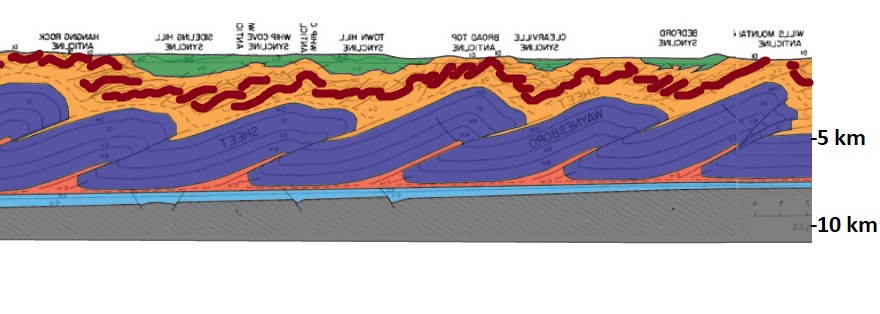
The complex structures in the three models above develop due to the strongly contrasting layer strengths in the models’ layer packs. Fold-thrust analog models using a more mechanically-consistent layer pack produce simpler anticlines above thrust splays rising from the basal detachment. In the example below, the pink and blue layers are mechanically the same, while the white layers provide detachment horizons.
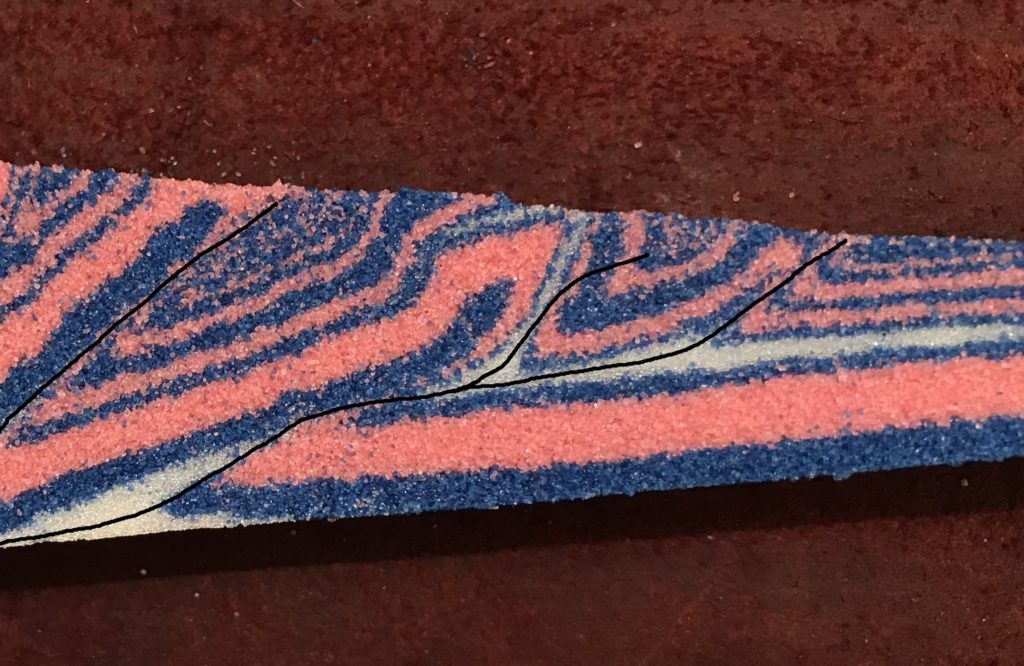
Because rock sequences (either sedimentary or otherwise) experiencing tectonic deformation are likely to contain mechanically-differing horizons, complexity in fault-related fold structures is common. Analog models can reproduce some of this complexity, and structures made from mechanically-contrasting materials can contain combinations of the main fault-related fold styles (below) within a single structure. The classic image below, sourced at this link, is from Roder (2012) and is drawn after Mitra (1992).
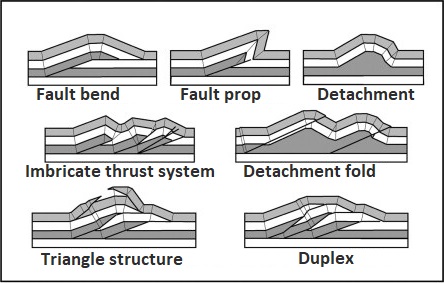
An important take-away from the images above and verified geometries in real anticlines (as well as models!) is that interpreting the subsurface by projecting surface orientations downward must be done with structural style in mind. Surface data is certainly critical to geologists’ efforts to understand deeper structure, but different styles of movement and thus different angular relationships that operate at various depths can lead to confusion and bad results. In many settings, accurate subsurface interpretation is nearly impossible without seismic imaging or drilling records.
Identifying and visualizing fold structures is a major part of any geology student’s experience, with most students’ first encounters with anticlines and synclines involving images like the ones below, used by the US National Park Service.
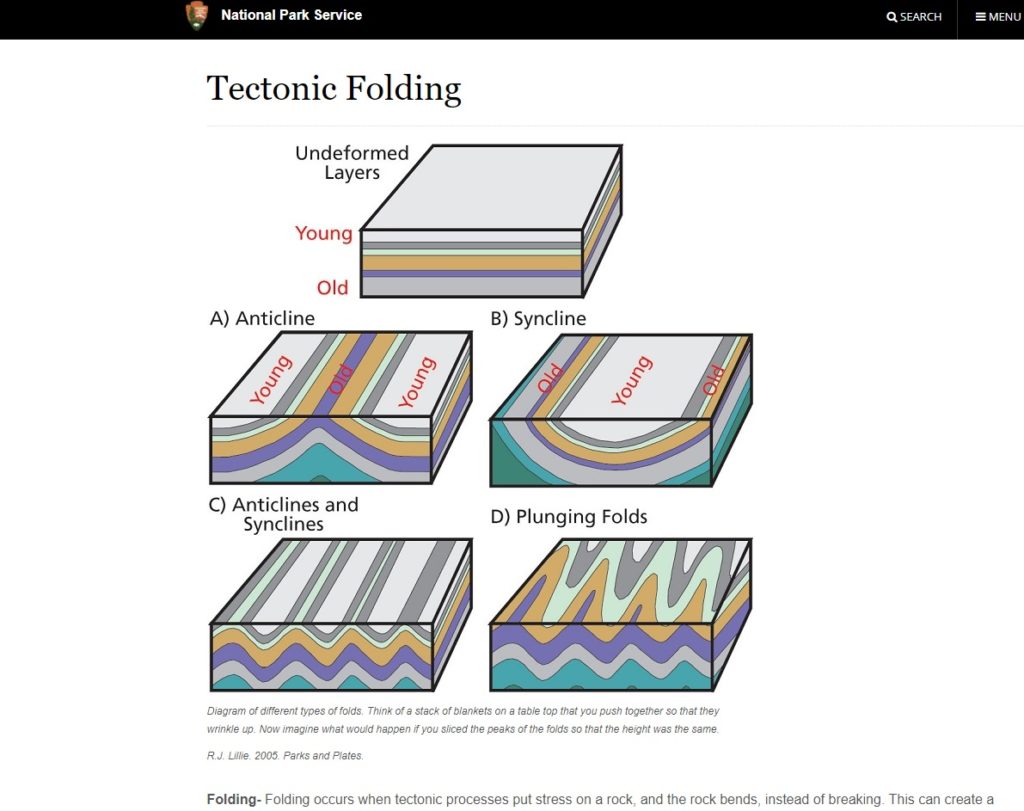
These simple representations are a necessary starting point, but they do not associate the folding with movement or the characteristics of the material responding to the movement. Real-world structures reflect a combination of kinematics and materials and the complex interplay between the two. Learning to understand the more nuanced aspects of rock deformation is a key part of advanced geologic study and critical to producing accurate sub-surface interpretation.

